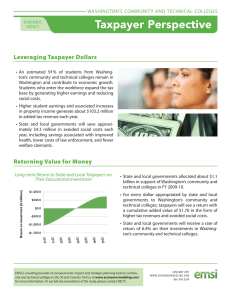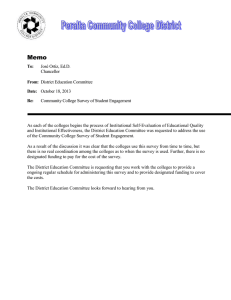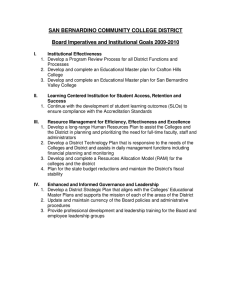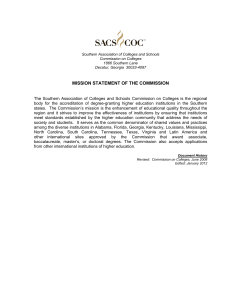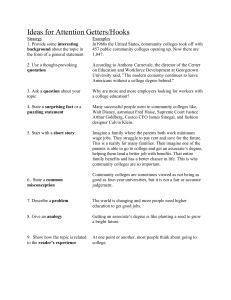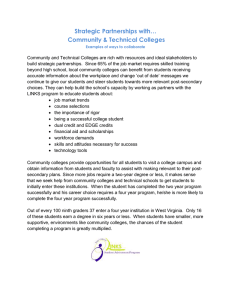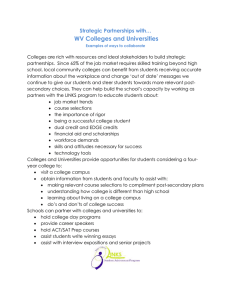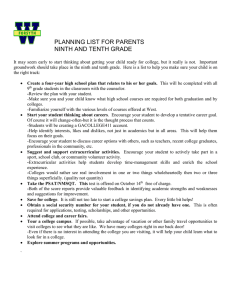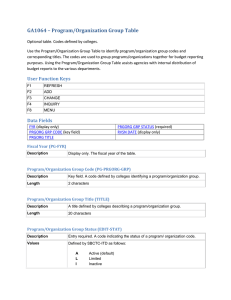Social Perspective Increasing State Income WASHINGTON’S COMMUNITY AND TECHNICAL COLLEGES
advertisement
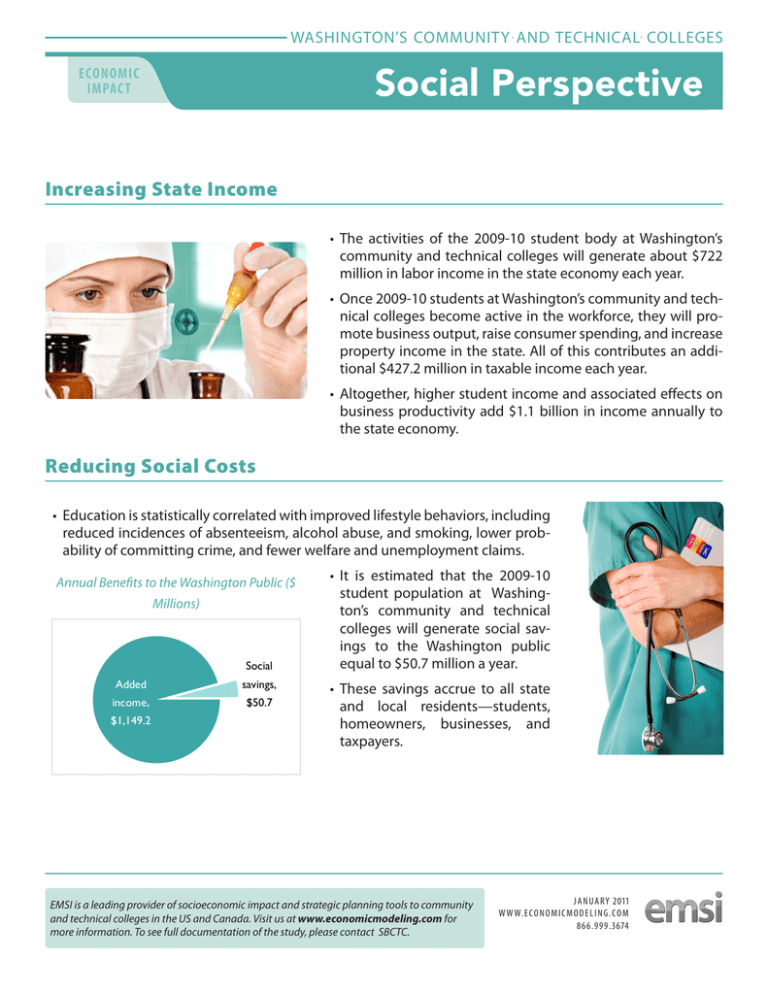
WASHINGTON’S COMMUNITY AND TECHNICAL COLLEGES Social Perspective ECONOMIC IMPACT Increasing State Income • The activities of the 2009-10 student body at Washington’s community and technical colleges will generate about $722 million in labor income in the state economy each year. • Once 2009-10 students at Washington’s community and technical colleges become active in the workforce, they will promote business output, raise consumer spending, and increase property income in the state. All of this contributes an additional $427.2 million in taxable income each year. • Altogether, higher student income and associated effects on business productivity add $1.1 billion in income annually to the state economy. Reducing Social Costs • Education is statistically correlated with improved lifestyle behaviors, including reduced incidences of absenteeism, alcohol abuse, and smoking, lower probability of committing crime, and fewer welfare and unemployment claims. Annual Benefits to the Washington Public ($ Millions) Social Added savings, income, $50.7 $1,149.2 • It is estimated that the 2009-10 student population at Washington’s community and technical colleges will generate social savings to the Washington public equal to $50.7 million a year. • These savings accrue to all state and local residents—students, homeowners, businesses, and taxpayers. EMSI is a leading provider of socioeconomic impact and strategic planning tools to community and technical colleges in the US and Canada. Visit us at www.economicmodeling.com for more information. To see full documentation of the study, please contact SBCTC. JANUARY 2011 W W W. E C O N O M I C M O D E L I N G . C O M 8 6 6 . 9 9 9 . 3 6 74
